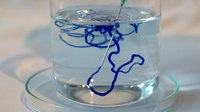
Photo from wikipedia
Abstract In the present study, the treatments of real textile wastewater were investigated by utilizing individual electrocoagulation (EC) and nanofiltration (NF) processes as well as their hybridization (EC-NF). EC pretreatment… Click to show full abstract
Abstract In the present study, the treatments of real textile wastewater were investigated by utilizing individual electrocoagulation (EC) and nanofiltration (NF) processes as well as their hybridization (EC-NF). EC pretreatment was performed using different electrode materials (Aluminum (Al), Iron (Fe), and Titanium (Ti)). Results displayed that EC using Al electrode was superior to the other electrodes and could achieve about 64% and 94% of chemical oxygen demand (COD) and color removal, respectively. A loose NF membrane (NP010, Microdyn Nadir) was applied for NF process, providing resource recovery (salts and water reuse) through high retention of dyes and permeation of inorganic salts (fractionation of dyes/salts mixture). At the same time, the NF membrane had great removal of color (more than 87%) and ultralow rejections of inorganic salts (less than 4%). The hybridization of EC-NF could augment each other's strengths and mitigate their individual drawbacks. The NF membrane could eliminate the strong color from left-over EC-treated solutions and enhance the overall performance. Moreover, the EC process as pretreatment could reduce membrane fouling and increase the permeate flux of NF membrane. Therefore, the hybridization of EC-NF may possess superb potential for real textile wastewater treatment and efficient fractionation of dye/inorganic salts.
Journal Title: Separation and Purification Technology
Year Published: 2019
Link to full text (if available)
Share on Social Media: Sign Up to like & get
recommendations!